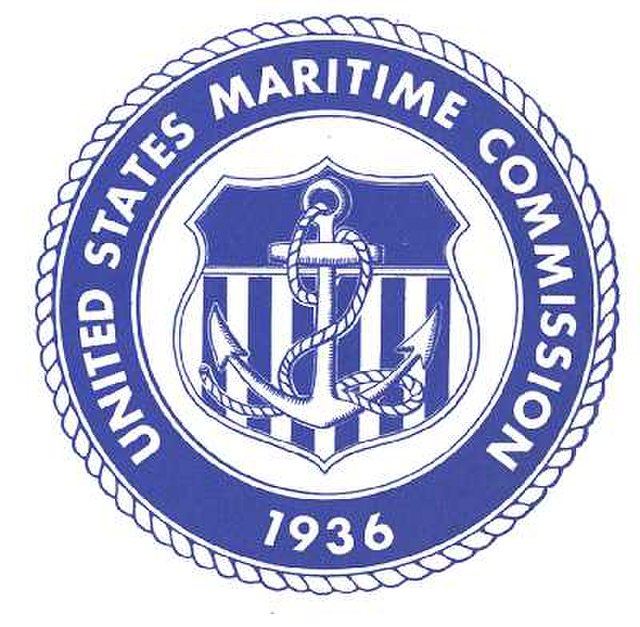The Type C4-class ship were the largest cargo ships built by the United States Maritime Commission (MARCOM) during World War II. The design was originally developed for the American-Hawaiian Lines in 1941, but in late 1941 the plans were taken over by the MARCOM.
USS Haven, an example of a Type C4 ship, seen here in 1954, a type C4-S-B2 ship.
USS General G.O. Squier, a C4-S-A1
General G.O. Squier-class USNS General A.W. Greely (T-AP-141) in the early 1950s
USS Repose (AH-16) at Yokosuka, Japan, 1952
United States Maritime Commission
The United States Maritime Commission (MARCOM) was an independent executive agency of the U.S. federal government that was created by the Merchant Marine Act of 1936, which was passed by Congress on June 29, 1936, and was abolished on May 24, 1950. The commission replaced the United States Shipping Board which had existed since World War I. It was intended to formulate a merchant shipbuilding program to design and build five hundred modern merchant cargo ships to replace the World War I vintage vessels that comprised the bulk of the United States Merchant Marine, and to administer a subsidy system authorized by the Act to offset the cost differential between building in the U.S. and operating ships under the American flag. It also formed the United States Maritime Service for the training of seagoing ship's officers to man the new fleet.
Seal of the United States Maritime Commission
WWII United States Maritime Commission poster






